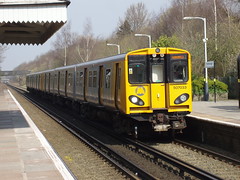 |
| Rip Off ! |
Oslo - $4.42
London (Underground/Overground) - $4.10
Brisbane - $3.58
Liverpool - $3.57
London (National Rail) - $3.50
Sydney - $3.40
Stockholm - $3.19
Adelaide - $3.09
Melbourne - $3.02
Lausanne - $3.00
Berlin - $2.94
Auckland - $2.44
Copenhagen - $2.40
Vancouver - $2.40
Helsinki - $2.34
NYC (Subway) - $2.22
Paris - $2.17
Perth - $1.95
Tokyo (Japan Rail) - $1.91
Tucson - $1.57
Los Angeles - $1.48
Santiago - $1.17
Hong Kong - $0.71
Moscow - $0.64
Dubai - $0.61
Shanghai - $0.47
Mexico City - $0.21
Cairo - $0.16
Not surprisingly since Brisbane has had the world's highest fare rises (as far as BrizCommuter can accertain) for the last 2 years, it is still one of the world's most expensive public transport systems. It is pipped to the post by Oslo and London Underground. It should be remembered however, that both London Underground and Oslo T-Bane have a considerably more frequent train service than in Brisbane, so their fares are still better value for money in terms of frequency. Both of these cities also have season ticket options which are not available in Brisbane.
Whilst the strong Australian Dollar does not do Australian cities any favours in this comparison, it should be remembered that some cities with relatively high costs of living such as Tokyo and Moscow are at the lower end of this list. Brisbane is also far more expensive than any other Australian city in this survey. Although Sydney is not too far behind Brisbane for adult peak single fares, a train user in Sydney also has weekly and season ticket options. A weekly ticket in Sydney would result in a typical 10 journey/week commute costing $2.60 per journey, nearly a dollar cheaper than Brisbane!
The only positive note that can be made of Brisbane's fare structure is that it is integrated, i.e. you can travel on a train, then bus, then ferry for the same fare as long as changes are made within an hour. Some cities (particularly those in Asia) do not have an integrated fare structure, meaning that if you want to ride a train and then a bus, you have to pay an additional fare. However, in many of the un-integated cities such as Tokyo, Hong Kong, and Shanghai, a peak journey using two different public transportation modes would still be cheaper than in Brisbane anyway.
There is little question that public transport fares in Brisbane are unjustifiably high, especially given the non-world class train frequencies. BrizCommuter would like to see an independent review of SE Queensland public fares, as it appears that commuters are getting very poor value for money. With one of the world's most expensive public transport systems, business will be good for SE Queensland car, motorbike, and scooter showrooms again in 2012.





